My last visit to Molsheim in Alsace was back in December 2018.
It was that kind of crisp, dry cold that nips at your cheeks and makes you want to walk briskly… or duck into a cosy café with the heating turned up.
I was in the middle of a Christmas trip through Alsace-Lorraine, driving between Saverne and Obernai, when I decided, rather on a whim, to stop in Molsheim.
Of course, I’d heard the name before, though it’s often overshadowed by Obernai – the undisputed tourist star of the area.
But Molsheim is something of the discreet one along the Alsace Wine Route: fewer crowds, fewer selfies per minute, yet plenty of charm – with that extra touch of soul you don’t find everywhere.
That day, the winter light showed off the steep rooftops and colourful façades, even if my photos would probably have fared better under a bright July sky.
Still, the atmosphere was there – a blend of history, heritage, and a certain art de vivre.
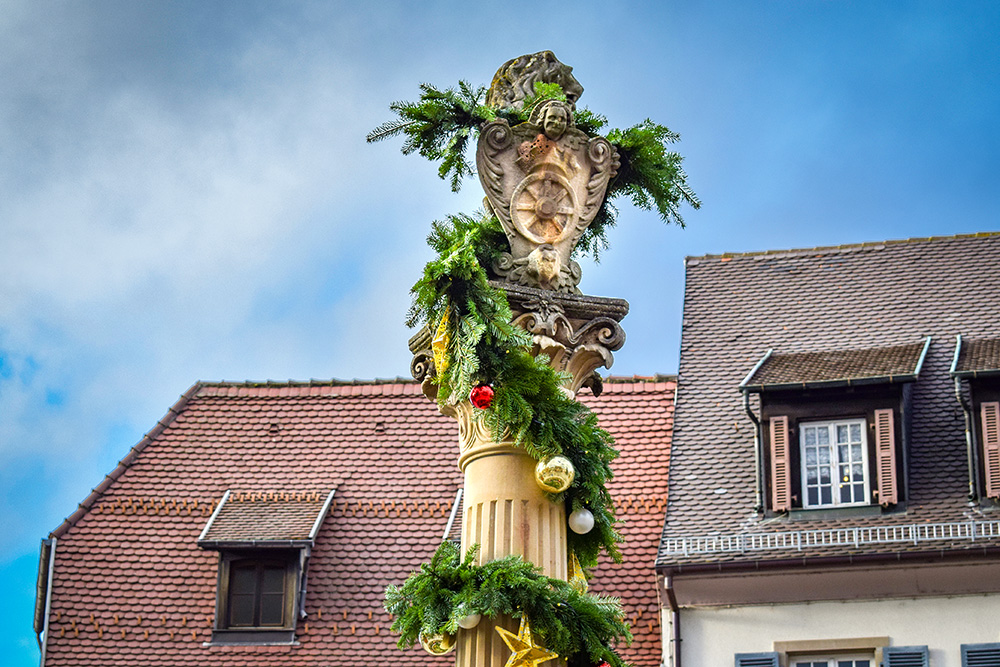
Molsheim in Winter © French Moments
Molsheim is a mixture of church towers, old stonework, good restaurants… and reminders of a turbulent religious past that still leaves its mark on the townscape.
And then, of course, there’s Bugatti – but that’s another story entirely.
Molsheim in a Nutshell
At first glance, Molsheim is a quiet little town nestled between vineyards and rolling hills, just a stone’s throw from Strasbourg.
It’s one of those stops along the Alsace Wine Route that you often discover by chance – perhaps by turning off a main road or following a sun-faded signpost.
With its 10,000 residents, it’s the perfect size for a walking tour: big enough to hold a few surprises, compact enough that you won’t get lost.
The name “Molsheim” means different things depending on who you ask: for car enthusiasts, it’s the historic home of Bugatti; for history buffs, it’s a stronghold of the Counter-Reformation in Alsace; for wine lovers, it’s a delicious stop before tackling the hillsides.
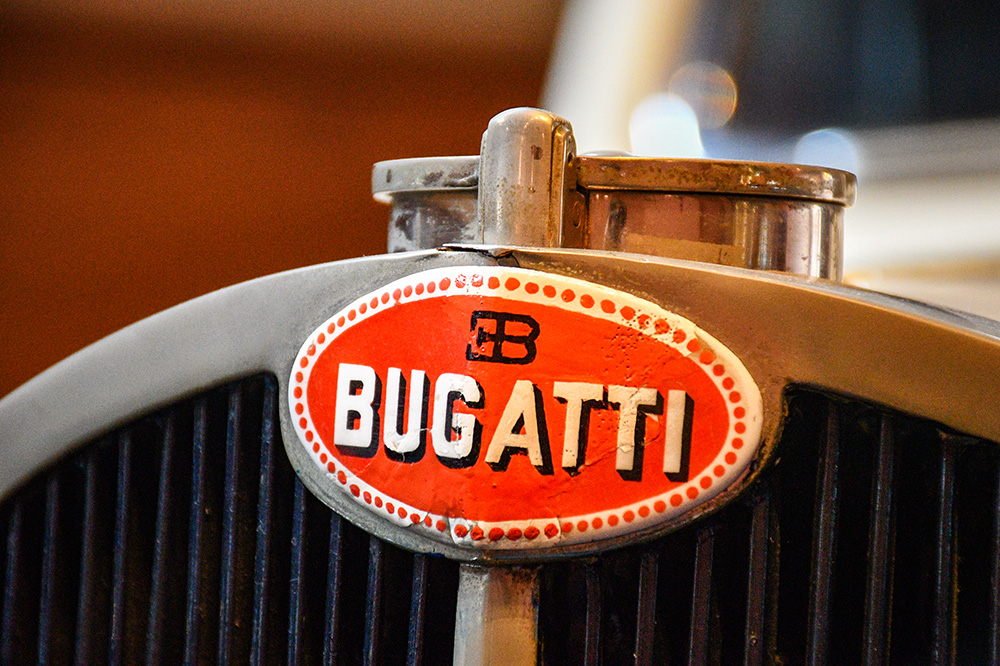
Detail of a Bugatti car © French Moments
And for wanderers like me, it’s a small town with character – one that blends heritage with a gentle pace of life.
A Town Shaped by History
Behind its neat façades and café terraces, Molsheim hides a past far more eventful than you might guess while strolling its cobbled lanes.
From the Dompeter to the Imperial City
Long before Molsheim stood proudly on the Alsace Wine Route, faith and stone had already written the opening lines of its story.
To the north of the present-day town, near the boundary with Avolsheim, stands the Dompeter – a name that carries the scent of the Middle Ages, meaning quite literally “Peter’s House”.
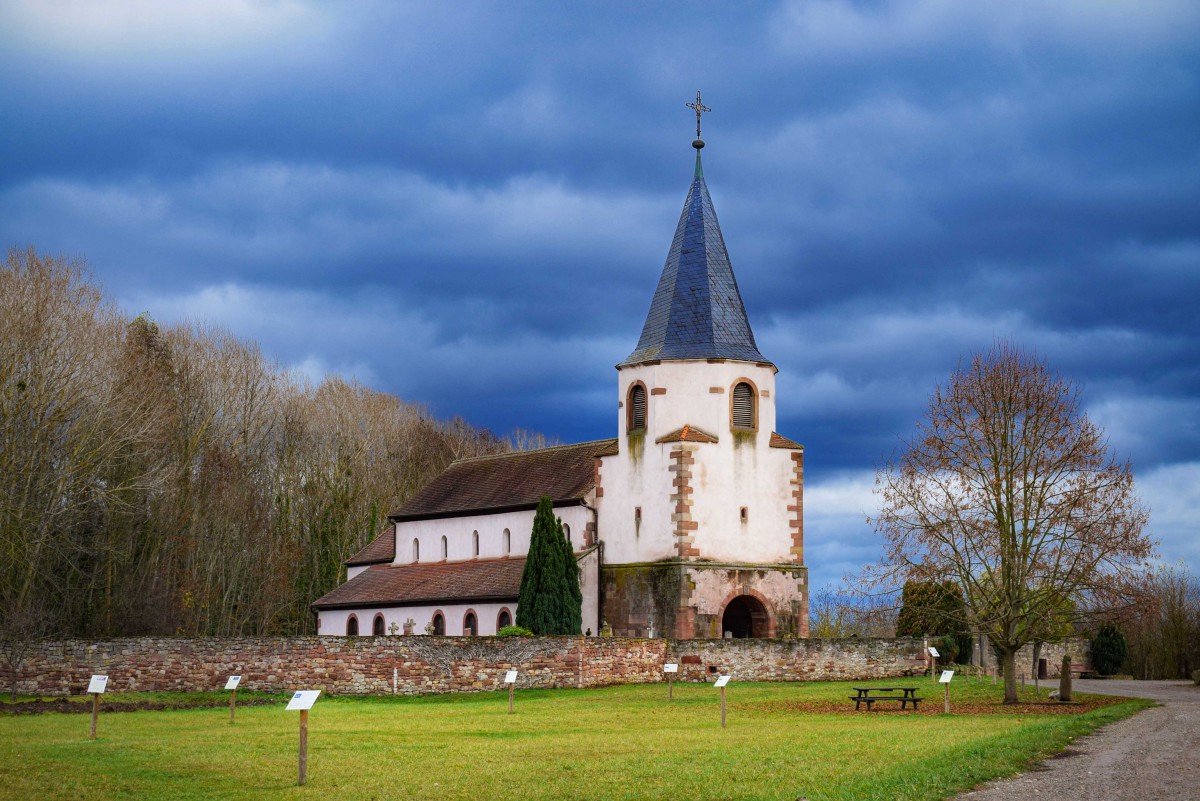
The Dompeter © French Moments
This church, considered one of the oldest in Alsace, was consecrated in 1049 by Pope Leo IX while visiting the region.
But Molsheim’s beating heart would soon move further south.
The first real urban core formed around a modest chapel dedicated to Saint George. This chapel, under the Dompeter’s authority, stood in the middle of a fortified cemetery – a detail that may surprise modern visitors, but one that was common in the Middle Ages to protect holy sites and their congregations.
Today, that sanctuary's location is occupied by the Market Square, in the upper part of the town.
From this small spiritual hub, the town expanded quickly to the south and east.
Its geography proved crucial: Molsheim lay at the mouth of the Bruche Valley, on a strategic route that carried salt from Lorraine into Alsace – “white gold” in the Middle Ages.
Molsheim Becomes a Town
On 4 February 1220, Holy Roman Emperor Frederick II officially granted Molsheim the status of a town.
A prestigious promotion… but not entirely lawful.
You see, the land actually belonged to the Bishop of Strasbourg, who didn’t take kindly to this imperial “land grab”. The result was a flurry of complaints, disputes, and arbitrations.
By 25 August 1221, Frederick II was forced to return the bishop’s right of patronage.
Then, on 5 May 1223, a new settlement allowed Bishop Berthold of Teck to recover part of his rights and taxes over the town.
Thus, Molsheim was born in a climate of strategy, commerce… and a hint of conflict – a tradition of tough negotiations that, truth be told, never entirely left it.
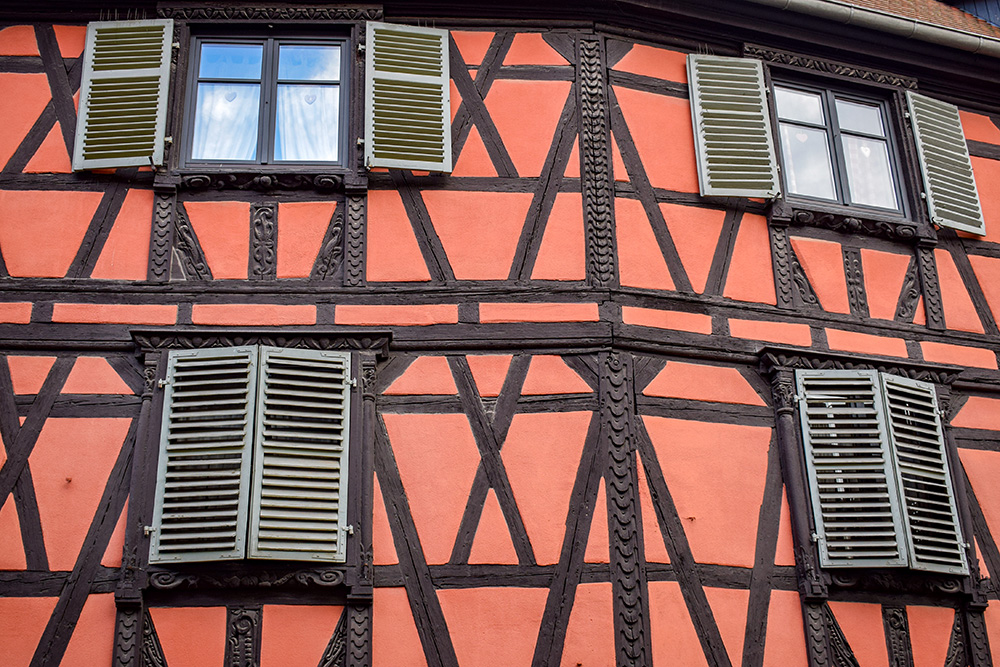
Fine timbering in Molsheim © French Moments
The Age of the Ramparts
By the 14th century, Molsheim was girded with solid fortifications.
Gates, towers, and moats spoke of a determination to protect itself – not just from roaming armed bands, but also from the political tensions that swept the region.
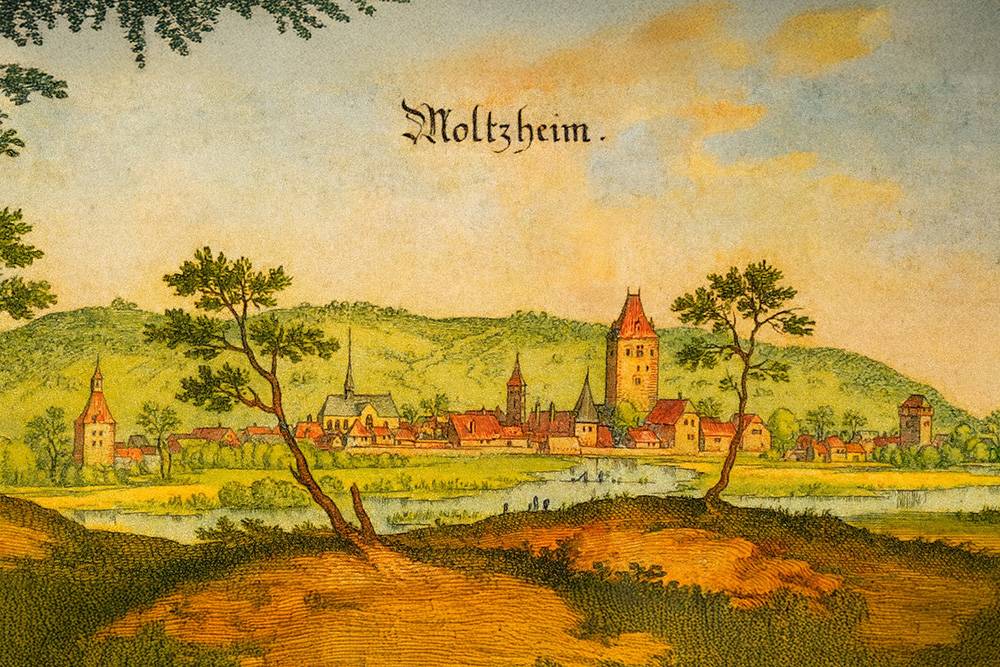
Some of these defences, like the Porte des Forgerons (Schmiedtor), are still standing today, lending the old town a faintly medieval air that visitors love.
The Turning Point: The Counter-Reformation
In the 16th century, the Protestant Reformation reached Alsace.
Nearby, Strasbourg, a major influence, embraced Lutheranism. Molsheim, however, remained loyal to Rome.
This choice placed it on the front line of the Counter-Reformation movement, the Catholic Church’s movement, to win back ground.
The Jesuits founded a college here in 1580 and, a few decades later, built an imposing church.
Molsheim became an intellectual and spiritual hub, welcoming students and professors from across the region – and sometimes from beyond the Rhine.
But the age was not all religious fervour. It was also an era of fear and suspicion.
In the 17th century, Molsheim saw several witchcraft trials that tainted its reputation.
Around fifty people were accused, with some sent to the stake.
Though the town maintained its status as a Catholic stronghold, its chronicles also preserve this darker chapter, when fear triumphed over reason.
Modern and Industrial Times
With the French Revolution, Molsheim lost its religious institutions.
The Jesuit buildings were repurposed or sold off as national property.
The town passed through the 19th century in relative peace, living off viticulture, crafts, and small-scale industries.
It was at this time, in 1909, that a certain Ettore Bugatti set up his car factory here.
The name “Molsheim” then became known across the world thanks to exceptional automobiles that remain a source of local pride to this day.
Molsheim Today
A town on a human scale, Molsheim has preserved its historic centre while opening itself up to visitors.
People come here for its monuments, its market, its cafés, its museums… and, of course, to look up at the massive silhouette of the Jesuit Church.
Just a few kilometres from Strasbourg, it offers an ideal stop on the Alsace Wine Route, with a unique identity that blends winegrowing tradition, religious heritage, and a nod to the world of motoring.
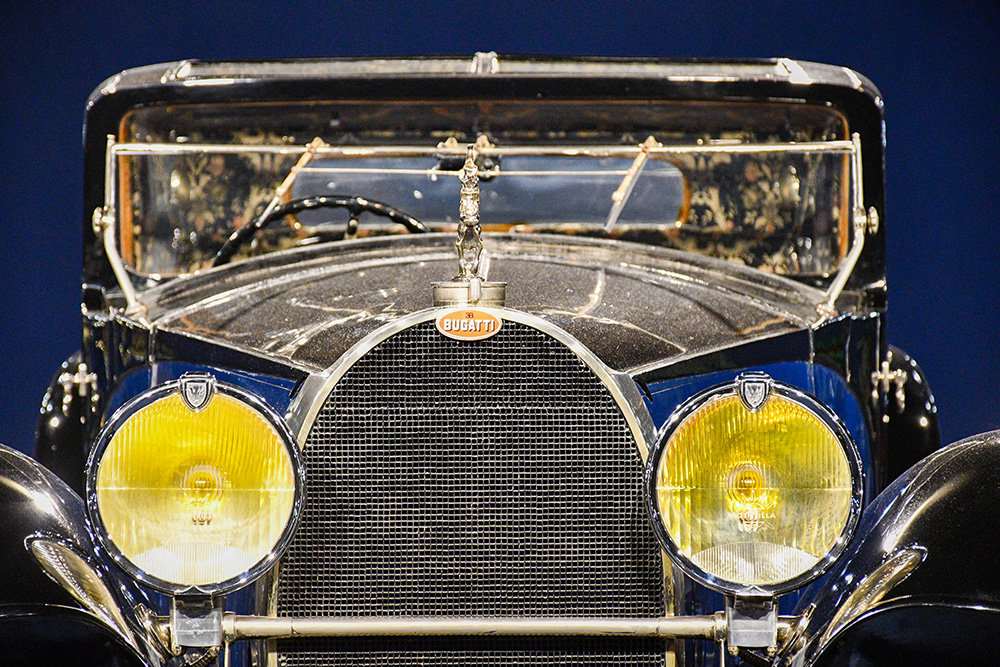
A Bugatti car - Cité de l'Automobile, Mulhouse © French Moments
A Guided Tour of Molsheim
Here are the must-see sights and landmarks for a visit to Molsheim:
Porte des Forgerons (Schmiedtor)
An emblematic remnant of the medieval fortifications, the Porte des Forgerons (Blacksmiths’ Gate) dates back to the early 14th century.
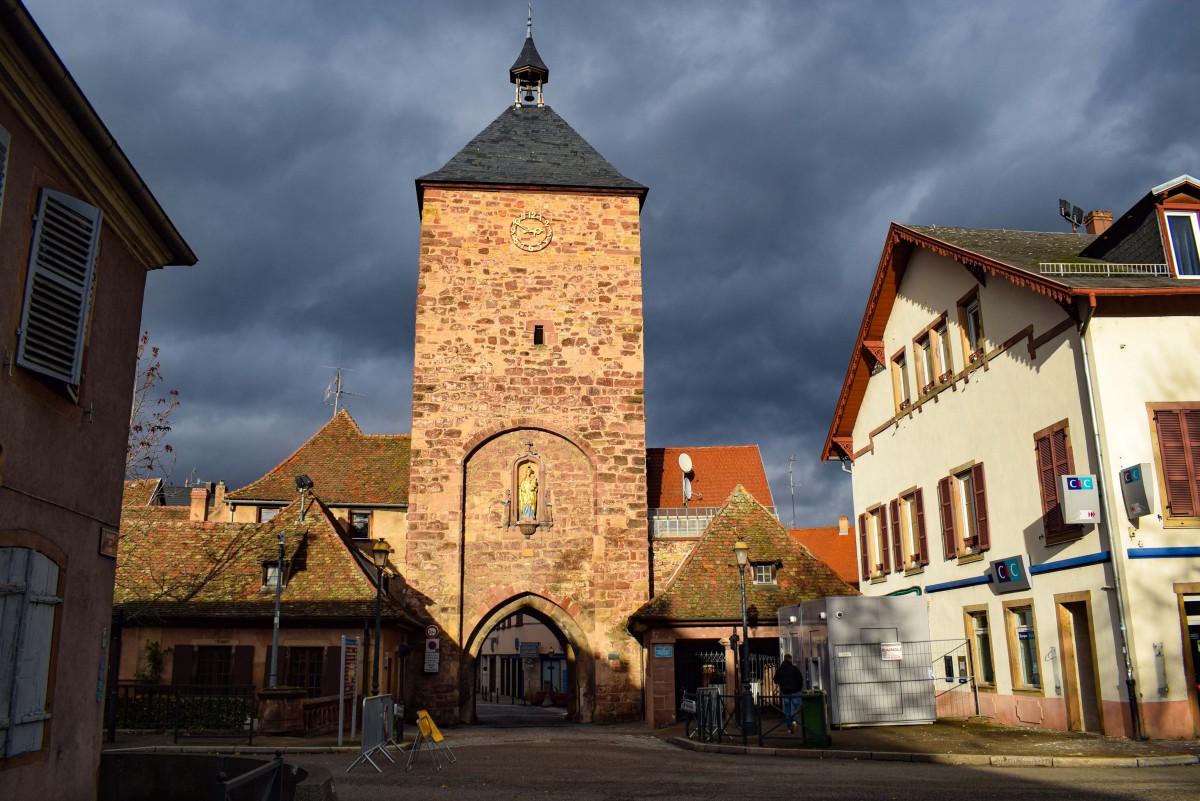
Porte des Forgerons in Molsheim © French Moments
In its day, it was preceded by a drawbridge spanning a water-filled moat, marking the main entrance to the walled town.
At the start of the 20th century, two small houses were built on either side of the gate: to the left, the toll-keeper’s house; to the right, the guardhouse – reminders of the structure’s strategic role.
Beneath its roof hangs an impressive bell weighing 40 quintals, cast in 1412 by Master André of Colmar.
It came from the former Saint George’s Church, once located on the Market Square.
On the outside, you’ll notice the statue of the Virgin and Child: nearly two metres high, made of cast iron, gilded with gold leaf and weighing 500 kilos, it was installed in 1868 thanks to a donation from the local bourgeoisie. Its golden silhouette contrasts sharply with the grey stone, instantly catching visitors’ eyes.
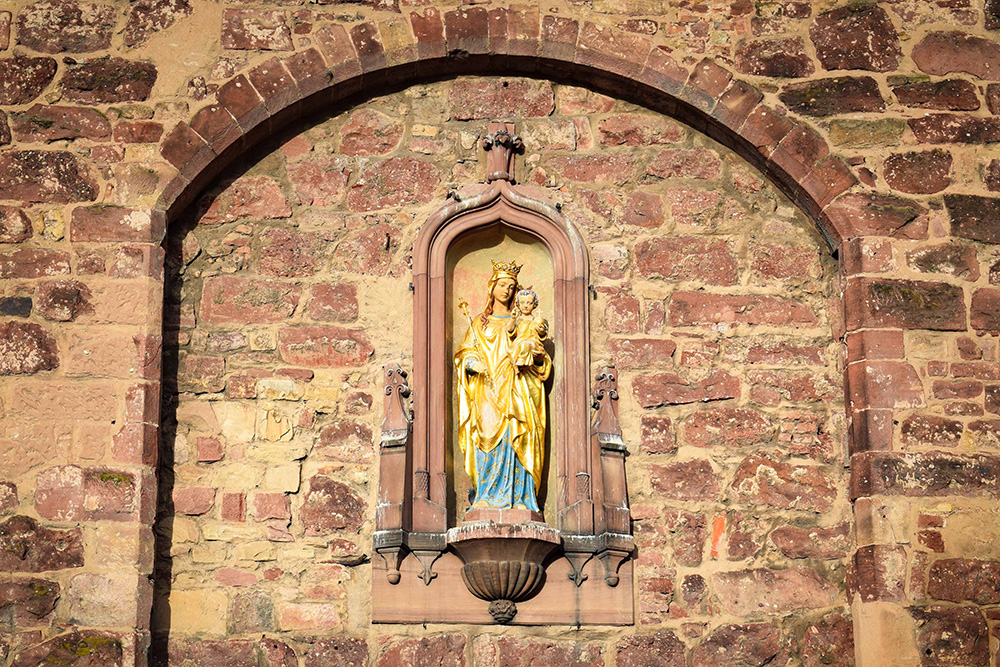
The statue of the Virgin © French Moments
Today, the Schmiedtor is one of the last visible witnesses to Molsheim’s old ramparts, a reminder that the town was once an important defensive stronghold.
Following Rue de Strasbourg brings you to the Place de l'Hôtel de Ville (Town Hall Square).
La Metzig – Former Butchers’ Guild House
On Town Hall Square, an elegant Renaissance building immediately draws the eye: the Metzig, or Metzgerhaus in Alsatian.
Built in 1583, it served as the headquarters of Molsheim’s powerful butchers’ guild – one of the town’s most influential corporations.
Its double exterior staircase, rare in Alsace (you can also find one at Mulhouse’s town hall), leads up to a gallery whose finely carved stone balustrade showcases local craftsmanship.
Above the staircase, a Renaissance turret dated 1607 houses a clock with jacquemarts – two stone cherubs that strike the hours and quarter-hours, giving the square a distinctive charm.
In the 16th century, the first floor served a prestigious purpose: meetings, banquets, and receptions were held there, underscoring the guild’s social and economic importance.
The façade facing the square proclaimed Molsheim’s prosperity and the excellence of its artisans.
A memorable moment came in 1962, when Charles de Gaulle, then President of the Republic, delivered a speech from a platform set up just in front of the Metzig. That instant, captured in photographs, remains etched in local memory.
Today, the Metzig no longer houses butchers, but it stands as a powerful symbol of Molsheim’s history – and a must for any visitor with an eye for Renaissance architecture.
The Lion Fountain – Guardian of the Square
On the Town Hall Square, it’s impossible to miss the elegant Renaissance fountain.
![Place de l'Hôtel de Ville © Zéphyrios - licence [CC0] from Wikimedia Commons Place de l'Hôtel de Ville © Zéphyrios - licence [CC0] from Wikimedia Commons](https://frenchmoments.eu/wp-content/uploads/2025/08/Place-de-lHotel-de-Ville-©-Zephyrios-licence-CC0-from-Wikimedia-Commons.jpg)
The Lion fountain on the Place de l'Hôtel de Ville © Zéphyrios - licence [CC0] from Wikimedia Commons
Its circular basin, ringed by bollards linked with sturdy chains (added in the mid-19th century), frames a fluted column topped with a Corinthian capital.
Right at the top, a lion – added in 1848 – proudly watches over Molsheim’s coat of arms, as if to say the town is in safe claws.
At the base of the column, four small bronze lions spit jets of water, a playful reminder that even standing still, they can still roar… in their own way.
Molsheim Town Hall
Molsheim’s current town hall (Hôtel de Ville), built in 1832, was the outcome of an ambitious municipal modernisation project.
That year, Mayor Jean-Pierre Carl and his council took a radical decision: to demolish a group of old buildings – including the Mullenheim manor house, the former Gothic-style town hall, and the archive building – in order to erect something more functional and representative.
Its façade, sober yet harmonious, is distinguished by a wrought-iron central projection crowned with a broad triangular pediment that asserts the building’s civic purpose.
A symbol of municipal authority and the heart of administrative life, the town hall still keeps watch over the commune’s affairs from the square that bears its name, in the centre of town.
The Former Carthusian Monastery of Molsheim
From the Town Hall Square, a discreet and picturesque pedestrian lane sets off – Rue Saint-Martin – leading to the former Carthusian monastery.
Founded in 1598, the Carthusian priory of Molsheim (Chartreuse de Molsheim) was a monastic house that welcomed Carthusian monks (les Chartreux), famed for their solitary, silent life of prayer.
The complex was largely destroyed during the Revolution. At its centre, you can still make out the traces of Saint George’s Church, demolished in 1791, around which once stood 18 monks’ cells.
Today, the Carthusian grounds have become a peaceful space where a few remaining buildings and cloisters now form part of a museum dedicated to local history.
![Chartreuse Salon Prieuré © Société d’histoire et d’archéologie de Molsheim et environs - licence [CC BY-SA 4.0] from Wikimedia Commons Chartreuse Salon Prieuré © Société d’histoire et d’archéologie de Molsheim et environs - licence [CC BY-SA 4.0] from Wikimedia Commons](https://frenchmoments.eu/wp-content/uploads/2025/08/Chartreuse-Salon-Prieure-©-Societe-dhistoire-et-darcheologie-de-Molsheim-et-environs-licence-CC-BY-SA-4.0-from-Wikimedia-Commons.jpg)
Inside the Priory © Société d’histoire et d’archéologie de Molsheim et environs - licence [CC BY-SA 4.0] from Wikimedia Commons
Here, you can discover religious artefacts, archival material, and even a few relics linked to the town’s motoring heritage – Bugatti included, of course.
Place du Marché and the Tithe House
Let’s be honest: Molsheim’s Market Square isn’t one of those places that instantly elicits a “wow” from visitors.
But it’s worth a closer look.
On one side stands an imposing building: the former tithe house (Maison dîmière) of the Canons-Counts of the Chapter of Strasbourg Cathedral.
Between 1605 and 1681, this was where the tithe – that tax in kind – was collected, filling the granaries far more reliably than any coin-based levy.
![Maison dimiere from rue des Etudiants © Espirat - licence [CC BY-SA 4.0] from Wikimedia Commons Maison dimiere from rue des Etudiants © Espirat - licence [CC BY-SA 4.0] from Wikimedia Commons](https://frenchmoments.eu/wp-content/uploads/2025/08/Maison-dimiere-from-rue-des-Etudiants-©-Espirat-licence-CC-BY-SA-4.0-from-Wikimedia-Commons.jpg)
The Tithe House seen from the Rue des Etudiants © Espirat - licence [CC BY-SA 4.0] from Wikimedia Commons
The house rises over several storeys and hides, deep within, an immense vaulted cellar built to store tonnes of grain, wine, or other produce.
If you glance up to the left, you’ll notice a touching stone pietà, a reminder that behind the cold, administrative face of the tithe, there was also a spiritual dimension.
![Molsheim Maison dimiere © Ralph Hammann - licence [CC BY-SA 4.0] from Wikimedia Commons Molsheim Maison dimiere © Ralph Hammann - licence [CC BY-SA 4.0] from Wikimedia Commons](https://frenchmoments.eu/wp-content/uploads/2025/08/Molsheim-Maison-dimiere-©-Ralph-Hammann-licence-CC-BY-SA-4.0-from-Wikimedia-Commons.jpg)
The pietà of the Maison dimière seen from Place du Marché © Ralph Hammann - licence [CC BY-SA 4.0] from Wikimedia Commons
The Former Bakers’ Guild House
At the corner of Rue des Étudiants and Rue de Saverne stands a magnificent timber-framed bourgeois house, dated 1607 (engraved on the oriel).
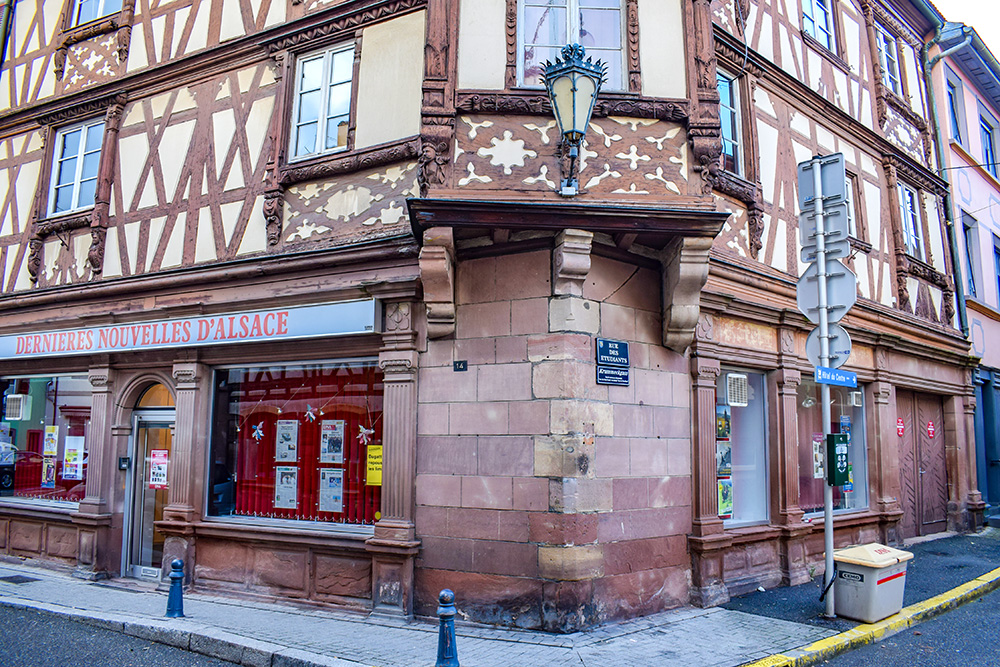
Maison de la corporation des boulangers à Molsheim © French Moments
In the 17th and 18th centuries, it was the headquarters of Molsheim’s bakers’ guild – though whether it was actually built for that purpose remains uncertain.
Another small mystery surrounds its heraldry: to the left of the oriel, a window bears the bakers’ emblem flanked by the initials K S, along with a puzzling shield showing a bird perched on a heart pierced by two arrows, topped with the letters M B.
The oriel, corbelled out on three solid brackets, dominates the corner and offers a unique vantage point over both streets.
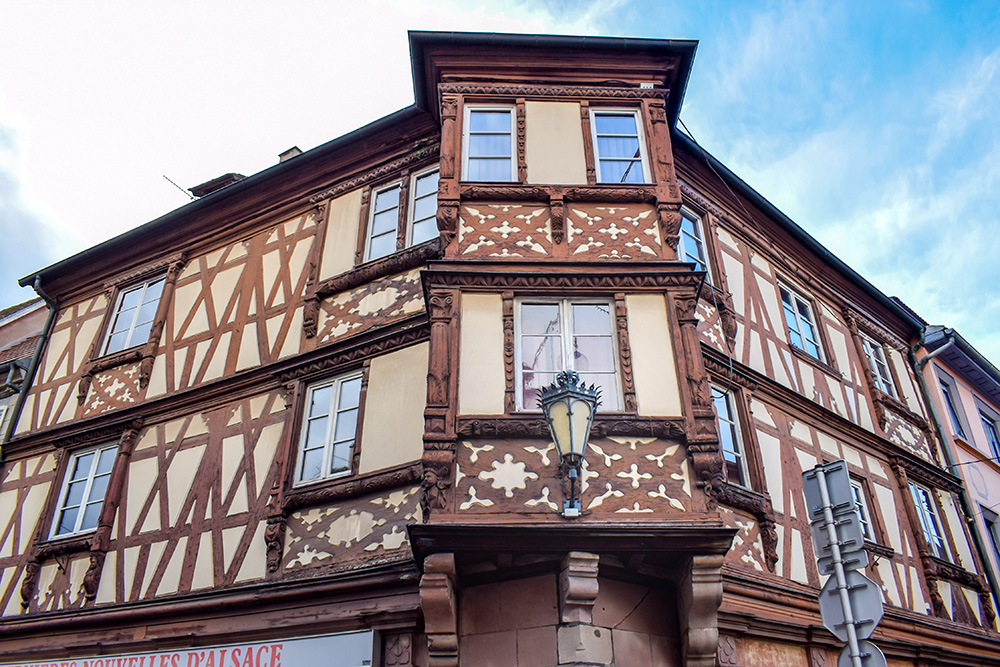
Maison de l'ancienne corporation des boulangers in Molsheim © French Moments
The windows – eight in total, plus those of the oriel – have surrounds carved with slender, curved columns resting on consoles, with sills decorated with acanthus leaves, cherubs’ heads, or children’s faces.
The lintels, finely worked, display motifs of egg-and-dart.
The timber panels and spandrels are adorned with delicately carved mouchettes, chevroned struts, or sculpted posts, while the sandstone consoles show heads, shields, and foliage.
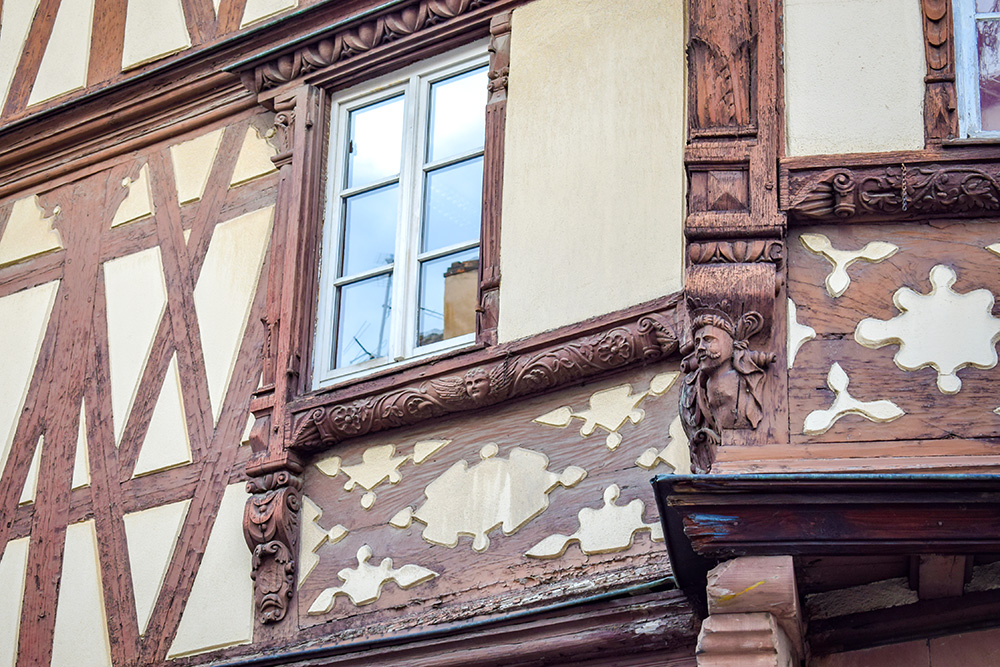
Details of the timbering © French Moments
In the past, the ground floor opened onto the street with a carriage entrance and large windows.
Today, it has been rebuilt in exposed sandstone and houses a garage along with the display windows of the Dernières Nouvelles d’Alsace newspaper, whose offices occupy the upper floors.
Proof, if any were needed, that even history-laden houses can adapt to the rhythm of the present.
Maison des Sœurs
Heading towards the Jesuit Church from the Town Hall Square, you enter Rue de l’Église – and there, a little surprise awaits.
It’s a charming 17th-century Renaissance-gabled house, its scroll-shaped pignon adding a touch of elegance.
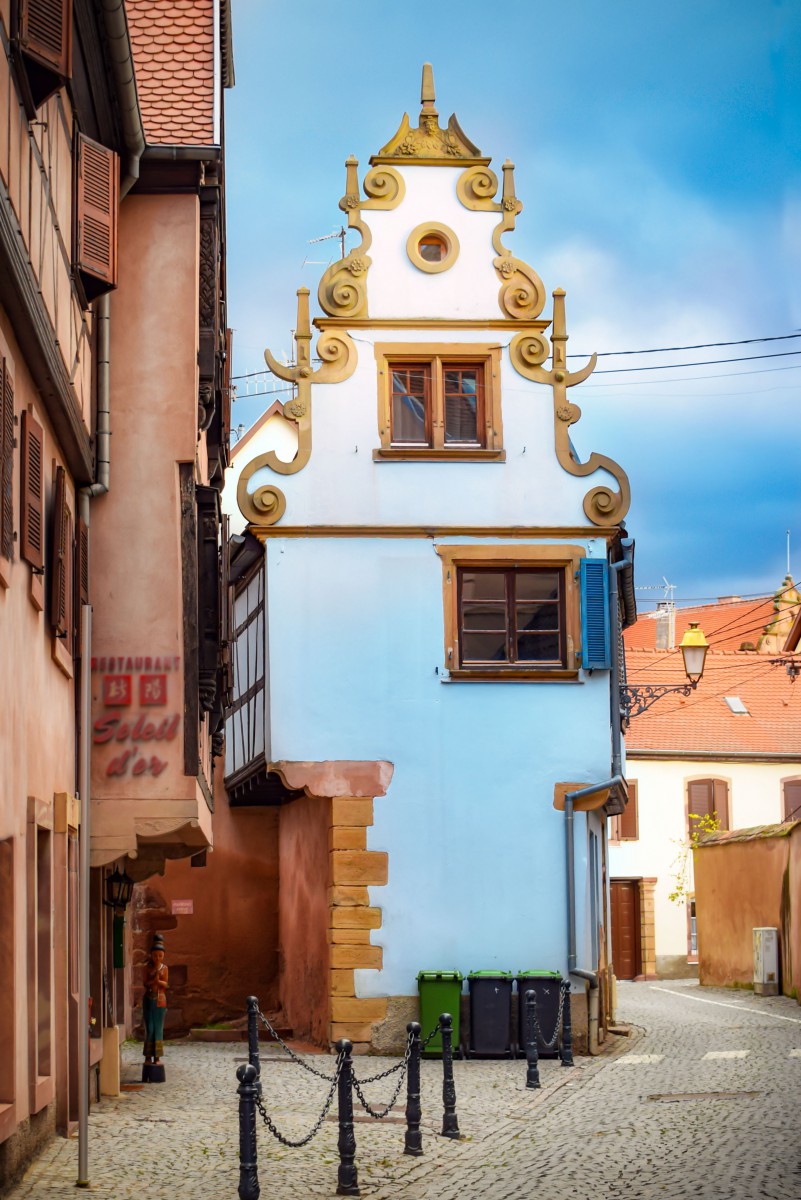
The elegant Maison des Sœurs in Molsheim © French Moments
At 1a–1b Rue de l’Église, this modest yet characterful dwelling holds an important place in Molsheim’s social and religious history.
It was here, in 1783, that Father Louis Kremp and seamstress Madeleine Ehrhardt founded a free school for the education of young girls, particularly those from rural backgrounds.
The building was generously lent by the town council at the time.
The small community, first known as the Congregation of the Sisters of Divine Providence, would, by the 1820s, become the renowned Sisters of Ribeauvillé – a teaching order highly active across Alsace.
Architecturally, the house combines simplicity and refinement: a sandstone ground floor topped by an upper storey in a mix of masonry and timber-framing, corbelled out beneath the long roof slopes.
The masonry gable features a mullioned window, a circular oculus, and coping stones adorned with scrolls and sandstone obelisks.
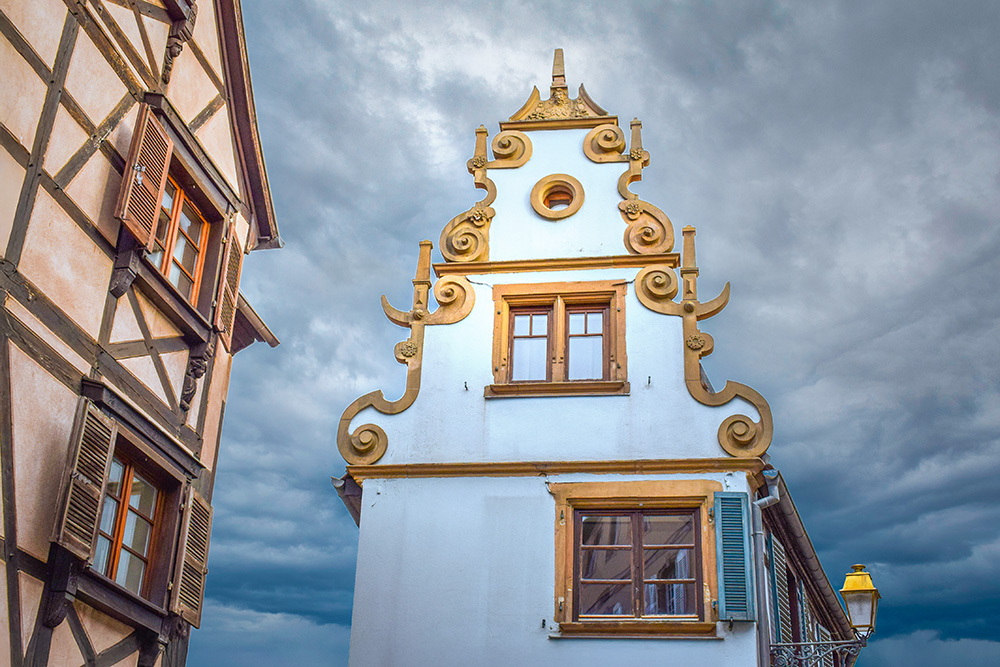
The beautiful gable adorned with scrolls and obelisks © French Moments
The chamfered cornerstones are picked and neatly outlined with a fine border.
The entrance door, topped with a mullioned transom, greets visitors without ostentation.
From the street, the decorative half-timbering catches the eye: sculpted window surrounds – some shaved back or altered – cut mullions, and charming details like built-in curule chairs.
The panels below the windows display a Saint Andrew’s cross and lozenge pattern (raute), a reminder of the refined craftsmanship of the 18th century.
In stone, wood, and living memory, this house speaks as much of Molsheim’s architectural heritage as of its historic commitment to girls’ education.
The Jesuit Church – A Symbol of the Counter-Reformation
It’s impossible to miss its massive silhouette dominating the historic heart of Molsheim.
Built between 1615 and 1617, the Jesuit Church is the architectural masterpiece that the Counter-Reformation left to the town.
It once symbolised the intellectual and spiritual might of the Jesuits, newly arrived to counter Protestant influence.

The Jesuit Church © French Moments
Push open the heavy door and the surprise is immediate: a tall, light-filled nave, lined with soaring columns, welcomes you into an atmosphere that is at once solemn and warm.
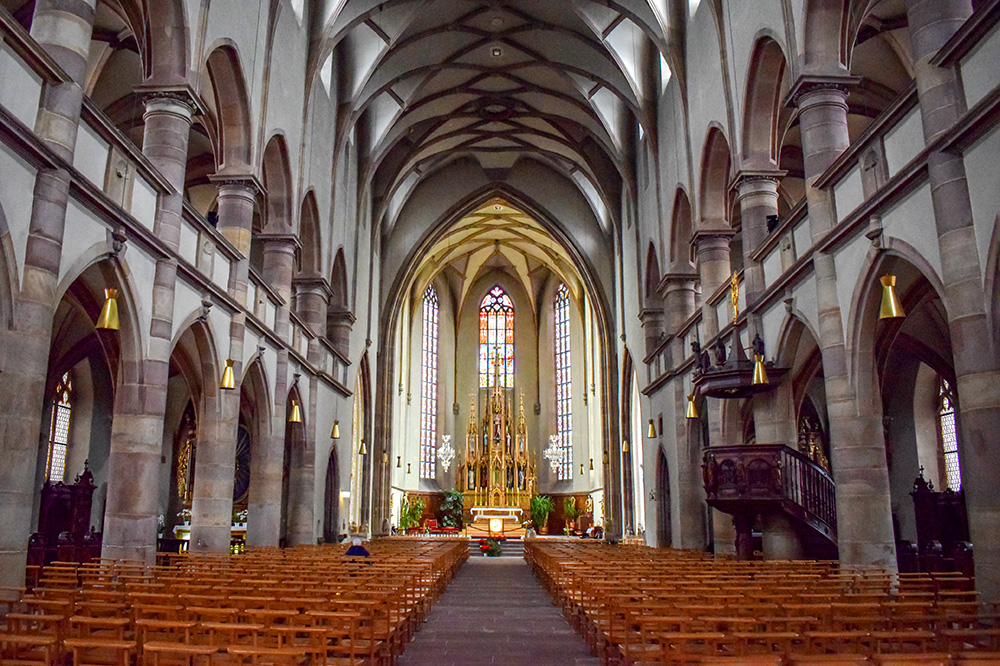
The nave © French Moments
Whitewashed walls amplify the brightness, while the side altars boast polychrome marbles and gilding – a striking contrast to the austere exterior, in keeping with the Jesuit style: plainness for the town, splendour for God.
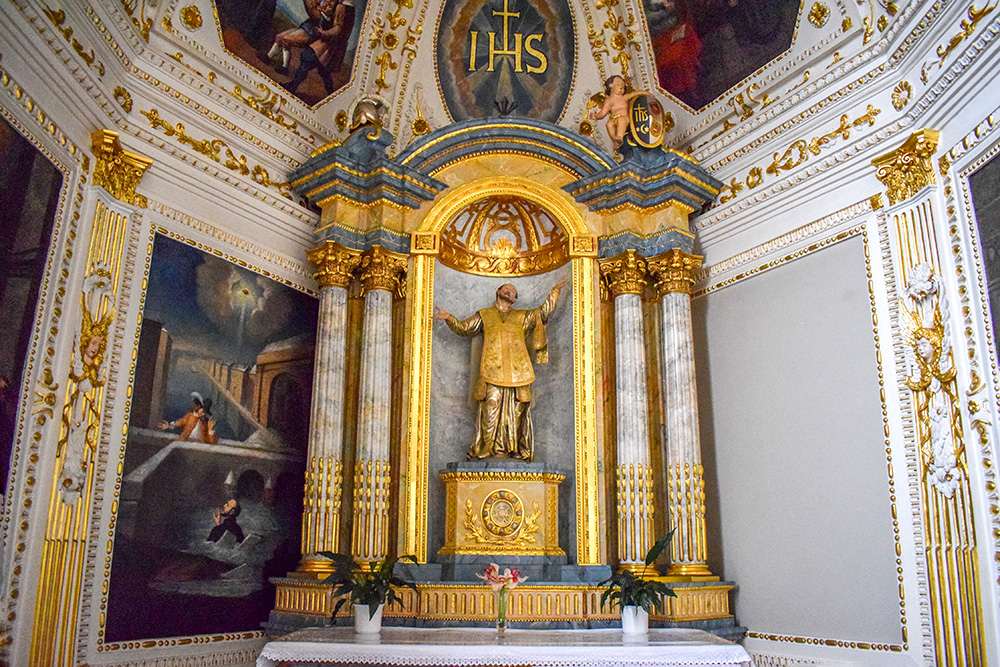
© French Moments
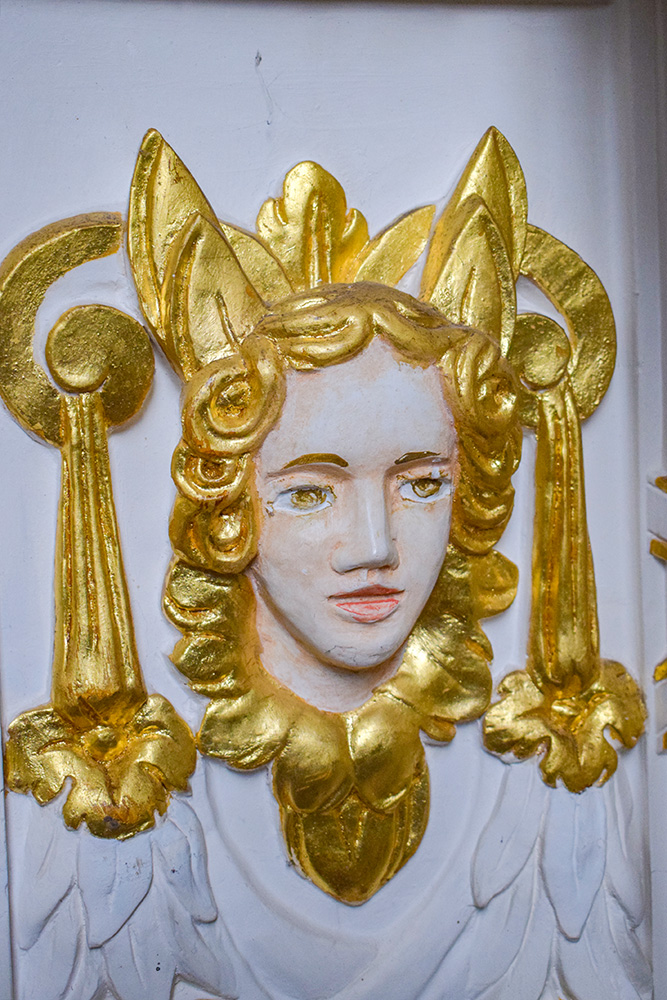
© French Moments

© French Moments
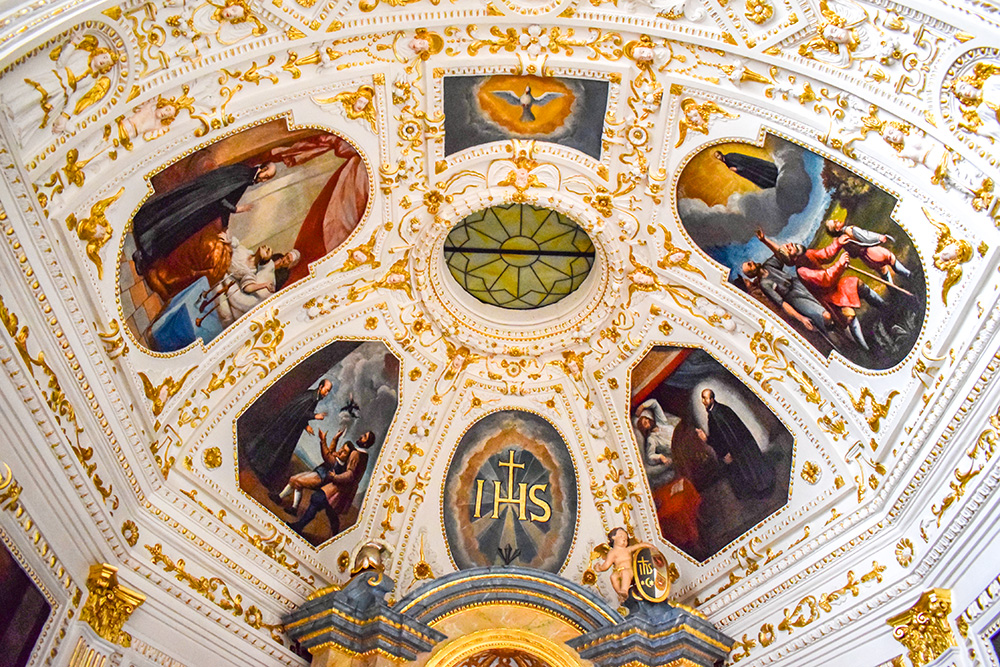
© French Moments
At the far end, the baroque high altar impresses with its spectacular décor – a blend of stucco work, angelic sculptures, and colourful marbles.
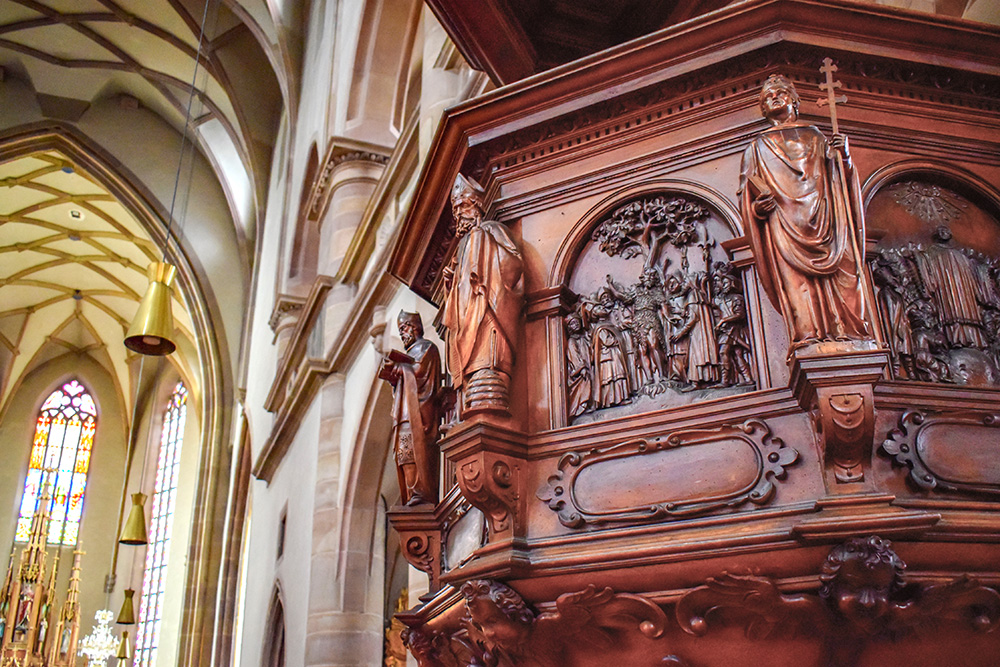
The pulpit © French Moments
Music lovers will be drawn to the superb Silbermann organ, its carved case seeming to float above the ground.
The building’s exceptional acoustics make it a prime venue for concerts – another reason to check the cultural programme before you visit.
Anecdote: beneath these vaults have passed professors, students, bishops in exile… and more than a few heated theological debates.
Here, religious history is not just read in the stone – it still echoes in the air.
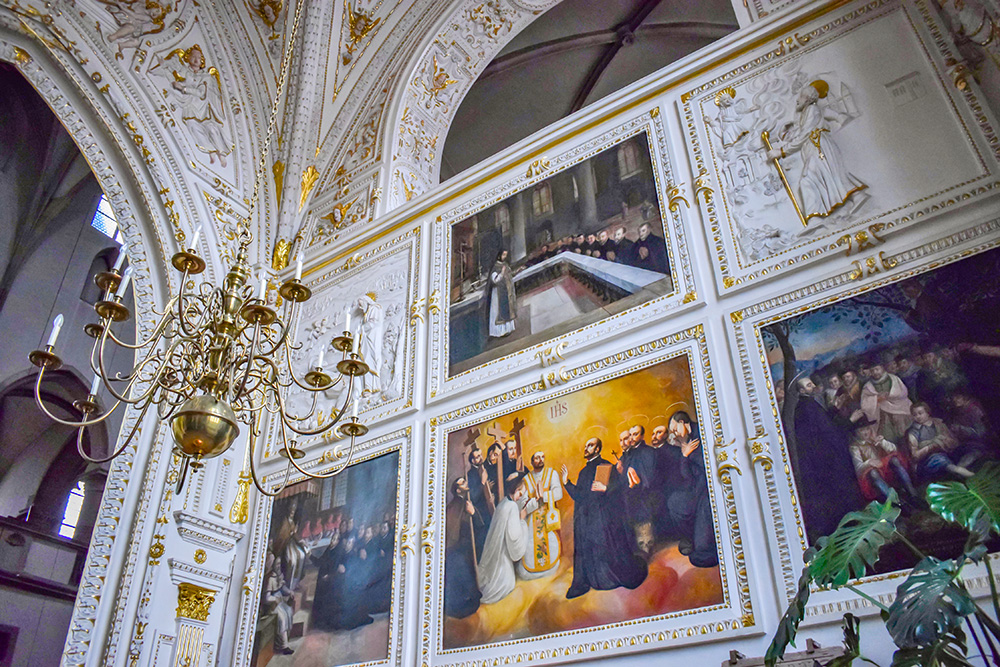
© French Moments
Chapelle Notre-Dame
Close to the Jesuit Church, the Chapel of Our Lady (Chapelle Notre-Dame) stands as one of the finest examples of neo-Gothic architecture in Alsace.
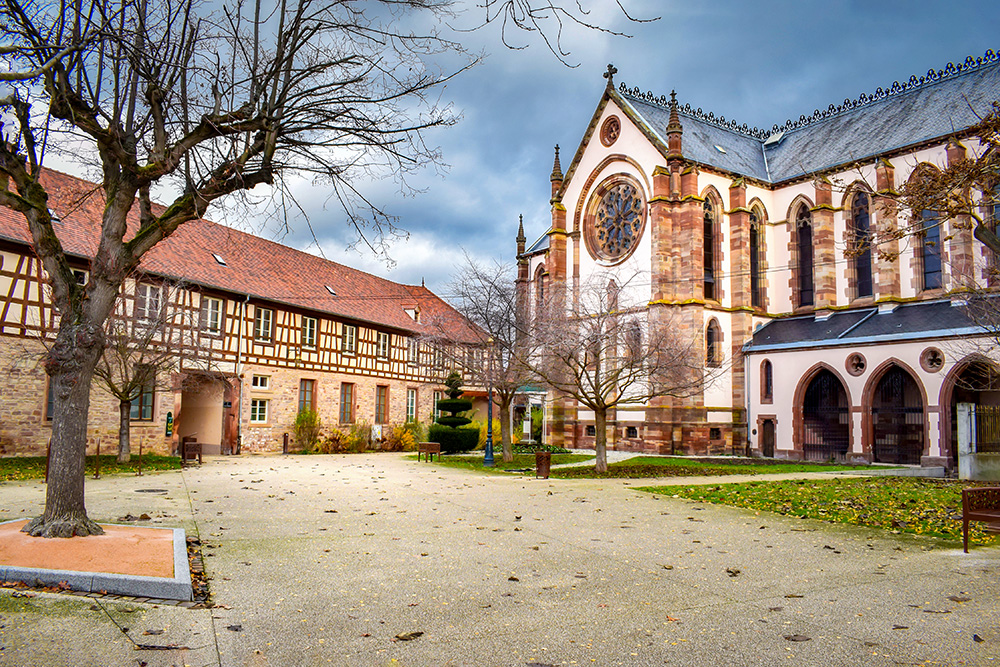
Chapelle Notre-Dame, Molsheim, Alsace © French Moments
Built by the Lorraine architect Vautrin, it takes direct inspiration from the Gothic style of the 13th century, with its slender lines and sculpted details reminiscent of medieval sacred art.
Originally, the building was part of the Convent of Our Lady, occupied from 1836 by teaching sisters of the Congregation of the Canonesses Regular of St Augustine.
For more than a century, these nuns shaped local education, instructing generations of pupils.
But in 1954, after 118 years, they left Molsheim, passing the chapel and its convent buildings to the town.
Closed for almost thirty years, the chapel regained its religious role thanks to a collective effort.
After a restoration campaign supported by the municipality and many volunteers, it was solemnly returned to worship on 24 November 1984.
Hôtel de la Monnaie
On the site of today’s Hôtel de la Monnaie, coins were once struck.
The mint, founded in 1573, operated for nearly a century and a half before being demolished in 1722 to make way for the bishopric’s tax office.
![Hôtel de la Monnaie de Molsheim © Ralph Hammann - licence [CC BY-SA 4.0] from Wikimedia Commons Hôtel de la Monnaie de Molsheim © Ralph Hammann - licence [CC BY-SA 4.0] from Wikimedia Commons](https://frenchmoments.eu/wp-content/uploads/2025/08/Hotel-de-la-Monnaie-de-Molsheim-©-Ralph-Hammann-licence-CC-BY-SA-4.0-from-Wikimedia-Commons.jpg)
Hôtel de la Monnaie, Molsheim © Ralph Hammann - licence [CC BY-SA 4.0] from Wikimedia Commons
Since then, the building has gone through many reincarnations: it once housed a hardware factory, later served as an army assembly point, and then as a tobacco-packing facility. In other words, it has never really stood idle.
Between 1972 and 1978, an extensive restoration brought back its dignity.
The town installed two vaulted cellars, named Coulaux and Bugatti, as well as a large upstairs hall — the Manderscheidt Room — fitted with stage equipment.
Today, the Hôtel de la Monnaie hosts receptions, exhibitions, and all manner of events, thus continuing, in its own way, its long tradition of activity.
You’ll find it on Rue du Maréchal Kellermann.
The Ramparts and the Powder Magazine
Molsheim still retains impressive remains of its medieval fortifications. Alongside the Schmiedtor (Porte des Forgerons - Blacksmiths’ Gate) already mentioned, you can admire the ruined Powder Magazine (la Poudrière).
These remains stand in the south-west of the old town, at the junction of Rue du Général de Gaulle and Rue du Général Leclerc.
In the Middle Ages, the entire town was encircled by walls and protected by a system of water-filled moats. Today, the fortifications provide a pleasant setting for a stroll – especially in autumn, when the coloured leaves lend extra charm to the scene.
In Conclusion – Molsheim, a Stop Worth Making
My most recent visit to Molsheim, in that memorable December of 2018, left me with a soft, slightly nostalgic impression.
Perhaps it was the winter light gilding the façades, or the quiet streets, broken only by muffled café conversations.
It felt as though I had stumbled upon a well-kept secret — a discreet town, overshadowed by nearby Obernai, yet rich in surprises for those who take the time to linger.
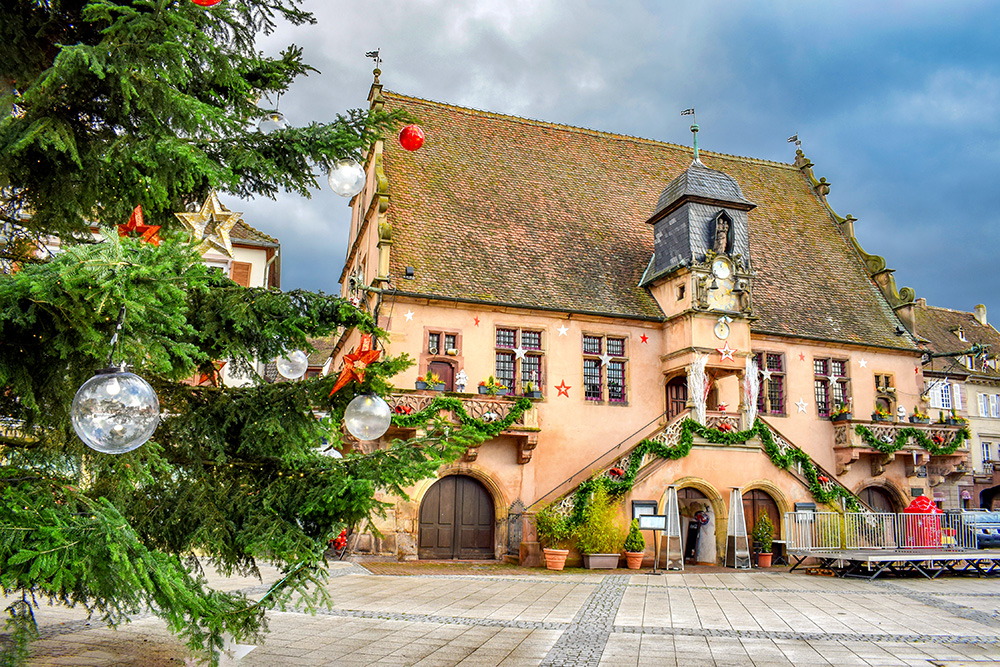
La Metzig in Molsheim, Alsace © French Moments
Molsheim does not reveal itself at first glance.
You have to wander its lanes, push open the door of the Jesuit Church, pause before the Metzig to admire its jacquemarts… then step off the beaten path to walk along the ramparts.
It is in those moments that you catch its soul: a small Alsatian town that has known glory, hardship, and rebirth, and that continues to live at its own pace, between tradition and modernity.
Practical Tips
Download the town map and tourist brochures before your visit.
Ideal duration: Allow half a day for the historic centre; a full day if you want to include museums, Bugatti, and walks in the surrounding area.
Best time to visit: Spring and autumn offer beautiful light and fewer crowds, though winter has its charm – especially at Christmas market time.
Getting there: Just 20 km from Strasbourg, Molsheim is easily reached by car or train.
Local treat: Don’t leave without trying a flammekueche (tarte flambée) with a glass of local Pinot Blanc.
Accommodation: Book your stay in Molsheim now by browsing the map below.
When you leave Molsheim, you realise there are still places in Alsace where history doesn’t display itself in full view, but rather hides in the curve of a doorway, a carved stone, or a street name.
And that’s perhaps why you’ll want to return.




![Metzig Molsheim © Didivo67 - licence [CC BY-SA 4.0] from Wikimedia Commons Metzig Molsheim © Didivo67 - licence [CC BY-SA 4.0] from Wikimedia Commons](https://frenchmoments.eu/wp-content/uploads/2025/08/Metzig-Molsheim-©-Didivo67-licence-CC-BY-SA-4.0-from-Wikimedia-Commons.jpg)
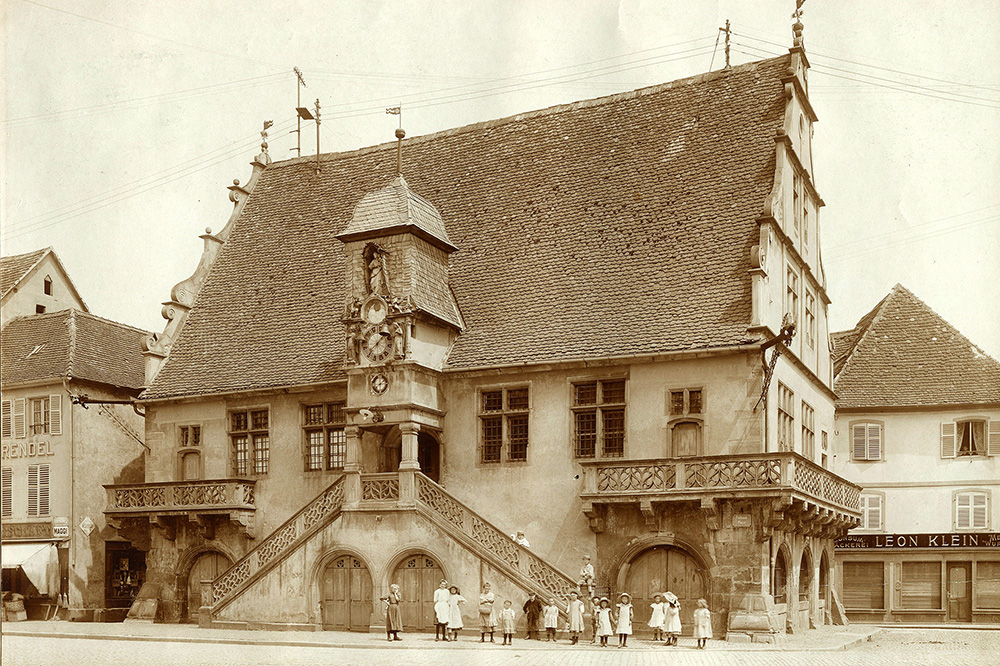
![Molsheim Metzig © Ralph Hammann - licence [CC BY-SA 4.0] from Wikimedia Commons Molsheim Metzig © Ralph Hammann - licence [CC BY-SA 4.0] from Wikimedia Commons](https://frenchmoments.eu/wp-content/uploads/2025/08/Molsheim-Metzig-©-Ralph-Hammann-licence-CC-BY-SA-4.0-from-Wikimedia-Commons.jpg)
![Mairie de Molsheim © Ralph Hammann - licence [CC BY-SA 4.0] from Wikimedia Commons Mairie de Molsheim © Ralph Hammann - licence [CC BY-SA 4.0] from Wikimedia Commons](https://frenchmoments.eu/wp-content/uploads/2025/08/Mairie-de-Molsheim-©-Ralph-Hammann-licence-CC-BY-SA-4.0-from-Wikimedia-Commons.jpg)
![Chartreuse © Grégory Oswald - licence [CC BY-SA 4.0] from Wikimedia Commons Chartreuse © Grégory Oswald - licence [CC BY-SA 4.0] from Wikimedia Commons](https://frenchmoments.eu/wp-content/uploads/2025/08/Chartreuse-©-Gregory-Oswald-licence-CC-BY-SA-4.0-from-Wikimedia-Commons.jpg)
![Chartreuse © Ji-Elle - licence [CC BY-SA 3.0] from Wikimedia Commons Chartreuse © Ji-Elle - licence [CC BY-SA 3.0] from Wikimedia Commons](https://frenchmoments.eu/wp-content/uploads/2025/08/Chartreuse-©-Ji-Elle-licence-CC-BY-SA-3.0-from-Wikimedia-Commons.jpg)
![Chartreuse Galerie Orientale © Société d'histoire et d'archéologie de Molsheim et environs - licence [CC BY-SA 4.0] from Wikimedia Commons Chartreuse Galerie Est © Société d'histoire et d'archéologie de Molsheim et environs - licence [CC BY-SA 4.0] from Wikimedia Commons](https://frenchmoments.eu/wp-content/uploads/2025/08/Chartreuse-Galerie-Est-©-Societe-dhistoire-et-darcheologie-de-Molsheim-et-environs-licence-CC-BY-SA-4.0-from-Wikimedia-Commons.jpg)
![Chartreuse de Molsheim Vitrail de Saint Bruno © Société d’histoire et d’archéologie de Molsheim et environs - licence [CC BY-SA 4.0] from Wikimedia Commons Chartreuse de Molsheim Vitrail de Saint Bruno © Société d’histoire et d’archéologie de Molsheim et environs - licence [CC BY-SA 4.0] from Wikimedia Commons](https://frenchmoments.eu/wp-content/uploads/2025/08/Chartreuse-de-Molsheim-Vitrail-de-Saint-Bruno-©-Societe-dhistoire-et-darcheologie-de-Molsheim-et-environs-licence-CC-BY-SA-4.0-from-Wikimedia-Commons.jpg)
![Chapelle Notre-Dame © Zéphyrios - licence [CC0] from Wikimedia Commons Chapelle Notre-Dame © Zéphyrios - licence [CC0] from Wikimedia Commons](https://frenchmoments.eu/wp-content/uploads/2025/08/Chapelle-Notre-Dame-©-Zephyrios-licence-CC0-from-Wikimedia-Commons.jpg)
![Chapelle Notre-Dame © Espirat - licence [CC BY-SA 4.0] from Wikimedia Commons Chapelle Notre-Dame © Espirat - licence [CC BY-SA 4.0] from Wikimedia Commons](https://frenchmoments.eu/wp-content/uploads/2025/08/Chapelle-Notre-Dame-©-Espirat-licence-CC-BY-SA-4.0-from-Wikimedia-Commons.jpg)
![Molsheim Rampart © BingLiang - licence [CC BY-SA 4.0] from Wikimedia Commons Molsheim Rampart © BingLiang - licence [CC BY-SA 4.0] from Wikimedia Commons](https://frenchmoments.eu/wp-content/uploads/2025/08/Molsheim-Rampart-©-BingLiang-licence-CC-BY-SA-4.0-from-Wikimedia-Commons.jpg)

